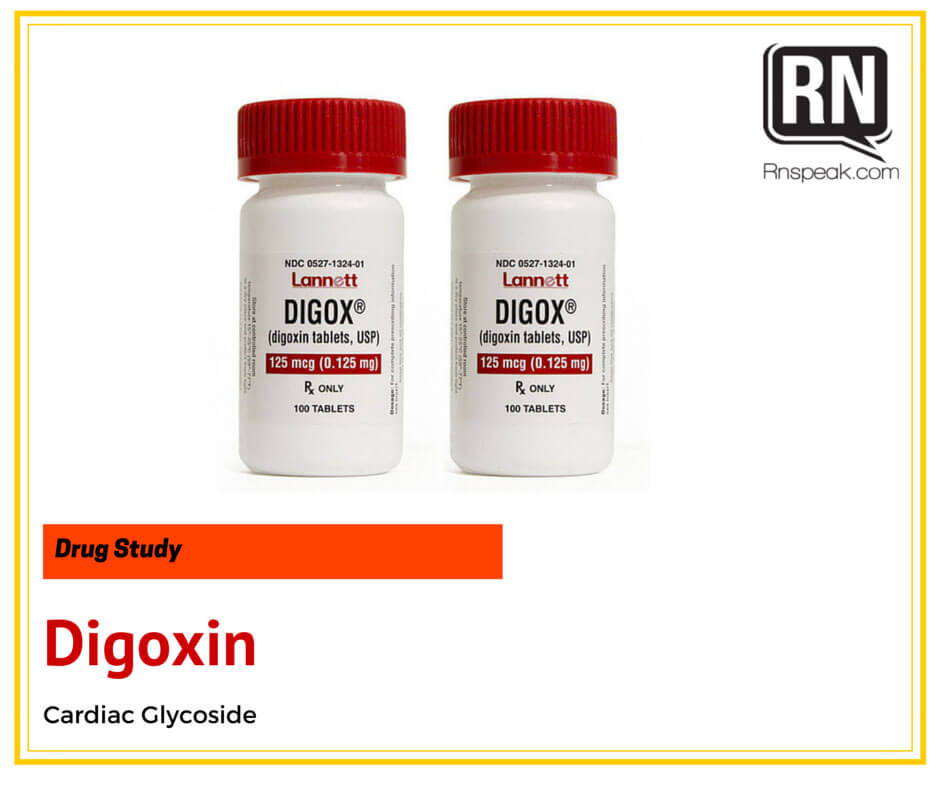With cardiac disease being the number one cause of death worldwide, many people are using drugs like Digoxin (lanoxin) to improve the pumping ability of their hearts.
Generic Name: Digoxin
Brand Name: Lanoxin
Classification: Cardiac glycoside
Uses:
- Treatment of congestive heart failure
- Control of rapid ventricular contractions in clients with atrial fibrillation/flutter
- Slow the heart rate in sinus tachycardia
- Treatment of SVT
- Treatment of cardiogenic shock
- Prophylaxis and treatment of recurrent paroxysmal atrial tachycardia with paroxysmal AV junctional rhythm
Actions:
- Increases the force and velocity of myocardial contraction by increasing the refractory period of the AV node and increasing total peripheral resistance
- Inhibits sodium/potassium-ATPase resulting in increased calcium influx and increased release of free calcium ions within the myocardial cells, which potentiates the contractility of cardiac muscle fibers
- Decreases the rate of conduction thereby decreasing heart rate
Contraindications:
- Ventricular fibrillation
- Ventricular tachycardia
- Presence of digoxin toxicity
- Hypersensitivity
- Beriberi heart disease
- Hypersensitive carotid sinus syndrome
Special Concerns:
- Use caution in clients with ischemic heart disease, acute myocarditis, hypertropic subaortic stenosis, hypoxic states, cyanotic heart and lung diseases
- Use caution in clients with viral myocarditis or rheumatic fever
Side-Effects:
- Tachycardia
- Headache
- Dizziness
- Mental disturbances
- N&V
- Diarrhea
- Anorexia
- Blurred vision
- Death from ventricular fibrillation
- Acute hemorrhage
- Convulsions
- Visual disturbances
- Angioneurotic edema
Dosage:
Per Orem: 0.4-0.6 mg initially, followed by 0.1-0.3mg q6h or q8h
IV: 0.125-0.5mg/day
Nursing Considerations
- Assess cardiac function
- Measure liquids precisely
- Assess for signs of toxicity, especially in children and the elderly
- Give IV slowly over 5 minutes
- Note possible drug interactions
- Assess for hyperthyroidism or hypothyroidism
- Obtain ECG
- Monitor CBC, serum electrolytes, calcium, MG, renal and liver function tests
- Obtain written heart rate parameters for drug administration as drug may cause extreme bradycardia
- Do not administer if HR is <50. Hold if HR is 90-110 bpm in children
- Obtain pulse deficit of apical and radial pulse
- Monitor weight and I&o
- Use antacid if gastric distress occurs
- Use caution during withdrawal
- Do not take with grapefruit juice
- Take after meals to lessen gastric irritation
- Maintain a sodium-restricted diet
- Do not take OTC drugs








